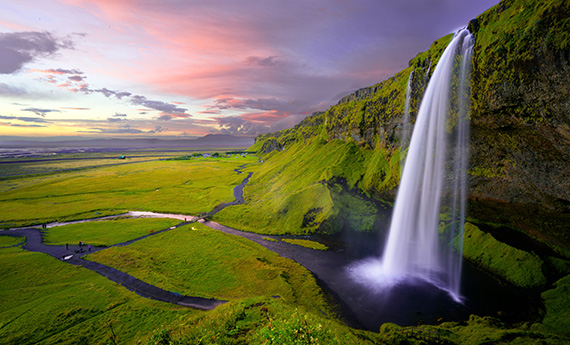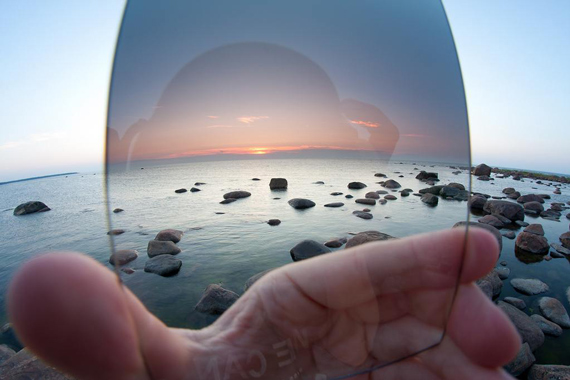Today’s photo tip concerns the neutral density filter. To get better landscape photographs, this is another piece of camera gear that should be in your bag at all times! It’s a filter effect that can’t be duplicated after the fact. It has to be done with the camera.
I’m sure you’ve seen landscape photography of waterfalls. You can shoot so that every drop of water is in sharp focus or you can shoot so that the water looks like a massive string of cotton candy. And everything in between!

Photo by Robert Lukeman
We know that to get the sharp image we need a fast shutter speed, and to get the cotton candy blur we need a slow one. Another good reason to put your camera on manual! You will never get award winning shots on automatic. Your shots will look like everyone else’s.
What if we want a really slow shutter speed, but it is a bright day? As you know, only a certain amount of light can be let in for a good exposure—if you let in too much, it will ruin the shot. So we first start closing down the aperture. What if that isn’t enough? What if we are at the smallest aperture setting, and we still have too much light?
Our next option would be to go with the slowest film or ISO setting we can. That is nice, it will give us nicely saturated, noise free shots, but there are limitations. Since our problem is that too much light is entering the lens, the simple fix is to block some of that light.
Enter the neutral density filter.
The neutral density filter is a filter that is designed to block a certain amount of light. That’s all! It doesn’t alter the light in any way—it’s neutral. The light entering the lens has all the same properties; there’s just less of it.
Voilla! You are now able to shoot that silky, cotton candy waterfall—on a bright sunny day!
Neutral density filters come in various strengths. You can block one stop of light, three, five, and so on. Plus, various densities can be “stacked” for even more light blockage. You could put a five stop and a three stop neutral density filter together for eight full stops. (That’s a lot of light!)
Neutral density filters have lots of uses beyond waterfalls. In future photo tip articles, I’ll go into even more cool things you can do to improve your landscape photography with these indispensable camera accessories.
About the Author:
Dan Eitreim writes for OnTargetPhotoTraining. He has been a professional photographer in Southern California for over 20 years. His philosophy is that learning photography is easy if you know a few tried and true strategies.
- - - - - - - - - - - - - - - - - - - - - - - - - - - - - - - - - - - - - - - - - - - - - - - - - - - - - - - - - - - - - - - - - - - - - - - - - -
Did you appreciate this newsletter? Please help us keep it going by Joining Our Patreon Supporters
What are your thoughts on this article? Join the discussion on our Facebook Page
PictureCorrect subscribers can also learn more today with our #1 bestseller: The Photography Tutorial eBook
Want to learn on-the-go? Throw these Snap Cards in Your Camera Bag
- - - - - - - - - - - - - - - - - - - - - - - - - - - - - - - - - - - - - - - - - - - - - - - - - - - - - - - - - - - - - - - - - - - - - - - - - -
The post Landscape Photography With an ND Filter ⚫ appeared first on PictureCorrect.
from PictureCorrect https://ift.tt/0NSudJj
via IFTTT







0 kommenttia:
Lähetä kommentti